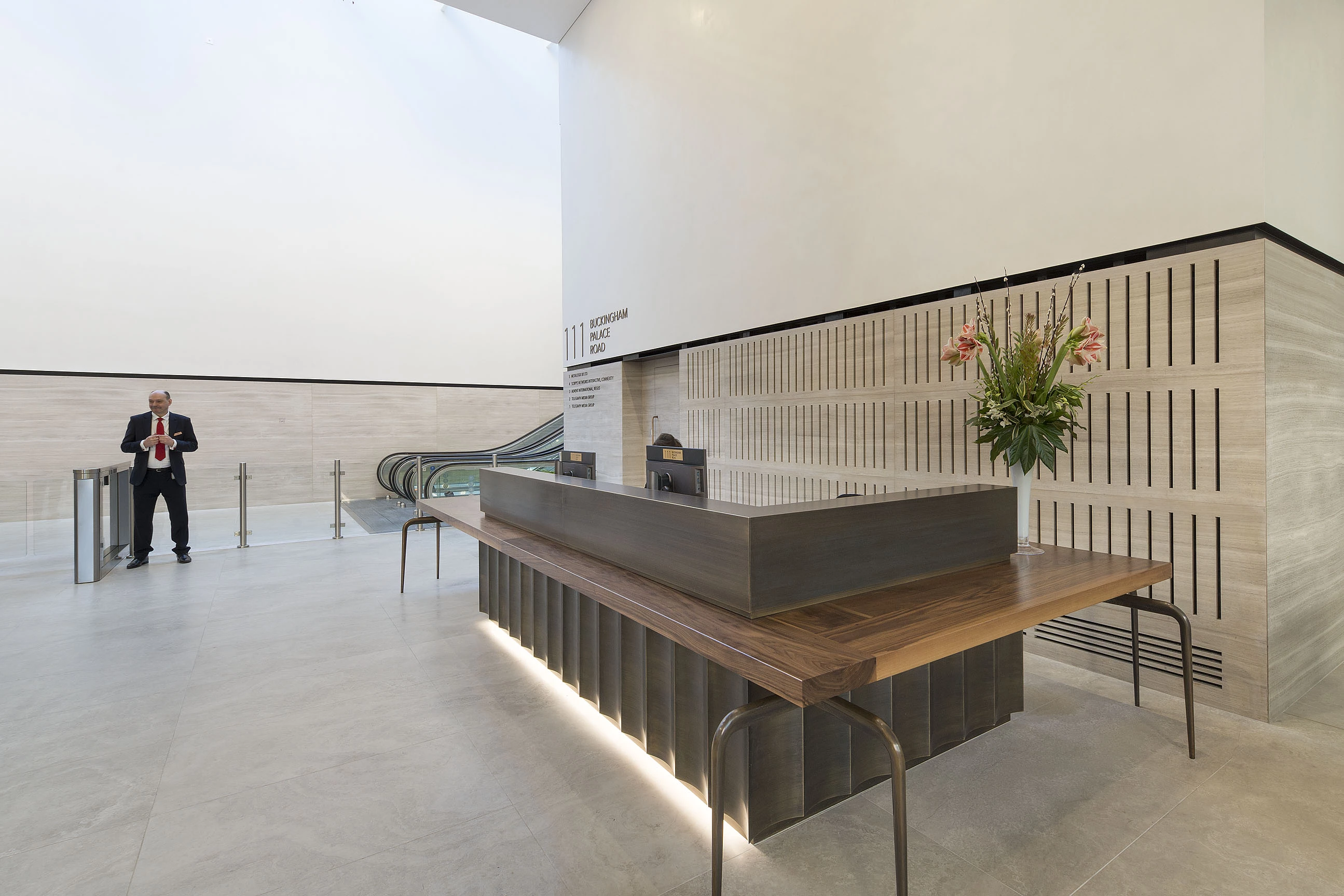
Partner Article
42% of architects say office clients ‘aren’t interested’ in end-user health and wellbeing
A new survey suggests employee welfare is falling short when adapting workspaces. It reveals 46% of British architects cite significant challenges when designing social distancing measures for office employees, with two out of five (42%) feeling their office-owning clients aren’t interested in end-user health and wellbeing. This is despite the offer of professional guidance at the start of reconfiguration projects.
The finding comes at a time when social distancing and employee wellbeing are regarded as vital design considerations for post-COVID working environments. For companies struggling to get workers back into the office, these results are unlikely to further encourage staff. It was recently reported that ‘half of workers would quit if they had to go back to the office five days a week’ showing that ‘office animosity’ has reached fever pitch.
Office spaces and reconfiguration budgets are simply too small
Oscar Acoustics, Britain’s leading provider of architectural acoustic finishes, recently conducted a survey of 206 architects focusing on employee welfare. The results exposed shockingly low levels of consideration given to COVID-19 safety measures and acoustic health in corporate office spaces. As we head into 2022, the implication is UK office buildings are not being properly adapted for returning workers’ physical and mental wellbeing.
On a practical level, smaller workplaces are proving problematic. Almost a third (29%) of architects highlighted ‘limited space’ as a main barrier to specifying adequate levels of social distancing. For them, the greatest challenge when reconfiguring office space is designing-in break-out areas and meeting rooms (56%). Specifically, 35% of respondents felt fixed partition walls are a major limitation to the successful reconfiguration of an office.
Furthermore, budgets for re-configuration projects are often seen as too small, with two in five respondents (40%) indicating penny-pinching as a major obstacle when working on office fit-outs. An equal number also flagged ‘inflexible existing finishes’ as another problem, compounded by restricted spend.
Importance of acoustic health
The survey explored how effective office re-designs are when it comes to tackling excessive noise within working spaces. Shockingly, given it’s an issue that can cause serious adverse health effects, just 9% of architects feel that acoustic design is given the attention it deserves by their clients. Almost half (43%) find clients to be unaware of their legal requirements for protecting employees under the Control of Noise at Work Regulations.
When asked to give a reason for this lack of awareness or worse, apathy, over two-thirds of architects (67%) say small design budgets are their biggest design challenge to achieving noise reduction.
Ben Hancock, Managing Director at Oscar Acoustics, said: “In the wake of the pandemic and with the surge of returning office workers, it’s disappointing to see that some companies are still unaware of their responsibility to staff’s health and safety.
“The effects of excessive noise can be a silent killer and it’s clear that the impact is still being underestimated. Studies have proven that excessive noise can increase the risk of hypertension, heart disease, diabetes, heart attacks and strokes and the rise in office re-fits and refurbishments has given companies a chance to overcome these issues head-on. If businesses are to come back stronger than ever, then it starts with creating the right environment for staff to thrive and feel at ease.”
This was posted in Bdaily's Members' News section by Candela .
Enjoy the read? Get Bdaily delivered.
Sign up to receive our popular morning National email for free.








 Powering a new wave of regional screen indies
Powering a new wave of regional screen indies
 A new year and a new outlook for property scene
A new year and a new outlook for property scene
 Zero per cent - but maximum brand exposure
Zero per cent - but maximum brand exposure
 We don’t talk about money stress enough
We don’t talk about money stress enough
 A year of resilience, growth and collaboration
A year of resilience, growth and collaboration
 Apprenticeships: Lower standards risk safety
Apprenticeships: Lower standards risk safety
 Keeping it reel: Creating video in an authenticity era
Keeping it reel: Creating video in an authenticity era
 Budget: Creating a more vibrant market economy
Budget: Creating a more vibrant market economy
 Celebrating excellence and community support
Celebrating excellence and community support
 The value of nurturing homegrown innovation
The value of nurturing homegrown innovation
 A dynamic, fair and innovative economy
A dynamic, fair and innovative economy
 Navigating the property investment market
Navigating the property investment market